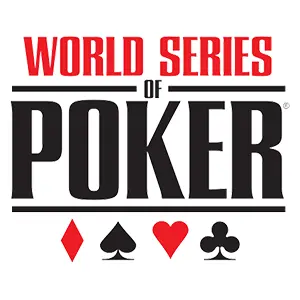The WSOP Moves To The Rio
Bye bye, Horseshoe. Hello Rio!

In 2005, the World Series of Poker had outgrown its old home at the Horseshoe. Harrah’s Entertainment, the new owner of both the Horseshoe and the WSOP, moved the tournament to its flagship Vegas venue, the Rio All Suites Hotel and Casino. The WSOP has been held at the Rio ever since. At the same time, Harrah’s was in the process of acquiring Caesar’s Entertainment, making them the world’s largest gaming company, a position they still hold today.
A much-needed move
The move to a larger venue proved to be timely, as the number of entrants to the main event exploded from 2,576 in 2004 to 5,619 in 2005. The number of preliminary events also expanded significantly, from 32 to 45. Johnny Chan won his 10th career bracelet, breaking the tie with Doyle Brunson. Doyle matched Johnny a few days later, winning his own 10th bracelet on the 35th anniversary of his first WSOP in 1970. Doyle’s son Todd also won his first bracelet, and T.J. Cloutier won his 6th, worth $657,100.
Greg Raymer’s impressive run
Among all former champions, Greg Raymer lasted the longest, finishing in the top 25 for the second consecutive year, which was quite an achievement given the increased number of entrants. Raymer’s 25th place finish earned him $304,680 and demonstrated that his win the previous year was no fluke.
Joe Hachem’s victory

First prize in the main event had increased from $2.5 million two years earlier to $5 million the previous year, and then to a whopping $7.5 million in 2005. This year, the world stage welcomed Joe Hachem, a former chiropractor from Australia. Hachem got into poker after a disease affecting his hands forced him to give up his chiropractic practice. He spent his newfound free time playing poker and eventually made a name for himself in local tournaments in Melbourne.
Traveling to the WSOP in 2005 with his own money, Hachem aimed to play in the main event and some preliminary tournaments. He finished 10th in one, netting $25,850. Hachem was one of the few Australians at the WSOP, and as he progressed in the tournament, his fellow Aussies cheered him on. This support inspired him, although the event’s importance and the prize money at stake were already significant motivators. For the first time, the top nine finishers were guaranteed at least a million dollars.
The final table drama
Hachem did not build a large stack during the days leading up to the final table but managed to keep it around average without getting into trouble. At the final table, he spent most of the time short-stacked and faced a critical moment when he went all-in pre-flop with Queen of Any Color7 of Any Color against Aaron Kantner’s pocket nines. A queen hit the board, allowing Hachem to double up and stay in the game.
Kantner, who had been using his position to push Hachem around, eventually went out in 4th place, earning $2 million. The final three players were Hachem, amateur Steve Dannenmann, an accountant and financial advisor, and professional John “Tex” Barch. Barch finished third, netting $4.5 million, leaving the accountant and the Aussie to battle for the title.
The decisive WSOP hand
The final table had been running for over 13 hours, a WSOP record. The heads-up portion lasted only six hands. Hachem was dealt 7 of Any Color3 of Any Color offsuit, and surprisingly called Dannenmann’s raise. The flop came 4 of Any Color5 of Any Color6 of Any Color, giving Hachem a straight. Hachem controlled his emotions and waited until the turn to bet aggressively. The turn card, an Ace of Any Color, gave Dannenmann top pair and an open-ended straight draw. Dannenmann went all-in, not realizing he had only three outs to tie the hand. The river was a blank, and Hachem won the championship.
Hachem wrapped himself in the Australian flag, raking in $7.5 million and achieving the glory he sought. This victory marked a significant moment in poker history, showcasing the importance of skill and luck in winning a major tournament.
World Series of Poker history
- The Beginnings
- Things Start Taking Off
- The Roaring Eighties
- The Early Nineties
- Silver Bars To The Comeback Kid
- Jack Binion Gets Forced Out
- The New Millenium
- The WSOP Gets Its World Rocked
- Harrah’s Takes Over
- The WSOP Moves To The Rio
- The WSOP Grows One More Time
- The Empire Strikes Back
- The November Nine Begins
- Once In A Blue Moon
- The 2010 Championship
- The 2011 WSOP Final Table Preview
- The 2011 WSOP Championship
- The 2012 World Series Of Poker
- The 2012 WSOP October Nine